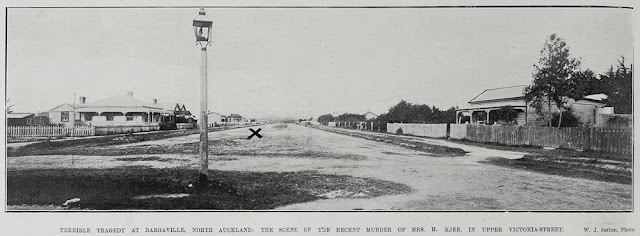Otamatea Marae history
The runanga house Aotearoa now located at Otamatea Marae was a Maori Parliament house. Throughout its tenure various hui were held. This one in particular reported in 1887 is of particular importance. Note the report is written in the language style of the era: Source: New Zealand Mail, Issue 791, 29 April 1887, Page 19
The Maori Parliament at Shelly Beach, Kaipara, which opened on the 13th instant, under the Presidency of Paul of Orakei, has just closed. Resolutions were unanimously adopted claiming the right of the Natives to manage their own affairs, according to the Treaty of Waitangi, and condemning the Native Land Act of last session as the pulminating point of oppression of the Natives by the Government, and declaring they will not submit to such law on their lands. Copies have been forwarded to the Premier, the Native Minister, and Sir George Grey. This Parliament represents the Ngapuhi, Rarawa, Ngatimaru, and Ngatiwhatua tribes.
An article written was in the Auckland Star in January 1883, which mentions the opening of the runanga house at Aotea. It was built by building contractor John Sheehan who also built the wharf and first part of the railway formation for the Kaihu Valley Railway Company in the mid-1880s.
A large and important gathering of the various hapu of the Ngatiwhatua tribe has taken place at the above locality during the present week for the purpose of formally opening the whare runanga or meeting House recently built to their order at that place Aotearoa, the name they have given it, is a plain but neat structure, measuring 40 feet in length by 20 feet width, and the walls are 12 feet high. It has been substantially built, is lined and varnished throughout inside, the ceiling which is an arched one, gives an additional height to the interior, besides greatly improving its acoustic properties. The cost is about £210. There is also an exceedingly well-executed bust of the Queen, which will be fixed upon the tablet before mentioned. The formal opening of the hall took place on Thursday, the 25th inst. A little after 9 a.m ...
The next speaker was Te Keene Tangaroa, who gave a resume of the causes leading to the erection of the building, and winding up by exhorting his people to continue firm in their friendship for the Europeans and uphold the mana of the Queen. He was followed by the principal chiefs present, after which the statue of Her Majesty the Queen was formally unveiled amid great cheering.
Te Keene Tangaroa a rangatira of Ngati Whatua was instrumental in the establishment of the Maori Parliament at Aotea. In May 1883, he wrote a letter to Sir George Grey and mentions the establishment of the runanga at Aotea and almost made mention of the monument that had been put in place as well as the governor of the time refusing to come to Kaipara for the hui.
Information by Liz Ferry.




Comments